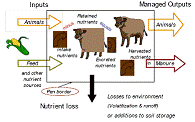Biological Systems Engineering, Department of

Department of Agricultural and Biological Systems Engineering: Presentations and White Papers
Date of this Version
6-20-2007
Document Type
Article
Abstract
Switchgrass is a promising lignocellulosic biomass for fuel-ethanol production. However, pretreatment of lignocellulosic materials is necessary to improve its susceptibility to enzymatic hydrolysis. The objectives of this study were to examine the feasibility of microwave pretreatment to enhance enzymatic hydrolysis of switchgrass and to determine the optimal pretreatment conditions. Switchgrass samples immersed in water, dilute sulfuric acid and dilute sodium hydroxide solutions were exposed to microwave radiation at varying levels of radiation power and residence time. Pretreated solids were enzymatically hydrolyzed and reducing sugars in the hydrolysate were analyzed. Microwave radiation of switchgrass at lower power levels resulted in more efficient enzymatic hydrolysis. The application of microwave radiation for 10 minutes at 250 watts to switchgrass immersed in 3% sodium hydroxide solution (w/v) produced the highest yields of reducing sugar. Results were comparable to conventional 60 minute sodium hydroxide pretreatment of switchgrass. The findings suggest that combined microwave-alkali is a promising pretreatment method to enhance enzymatic hydrolysis of switchgrass.


Comments
Written for presentation at the 2007 ASABE Annual International Meeting Sponsored by ASABE Minneapolis Convention Center Minneapolis, Minnesota 17 - 20 June 2007